The need for validation isn’t new. Whether you’re buying a $2 pair of socks or a $2000 home theater system, you want to be reassured by experts and other buyers that you’re making the right choice.
That no, the socks won’t fall apart the very first time you wash them, or that the surround system is going to transport you to the jungles of Africa with its superior woofers. And most importantly, that the brand you’re buying from isn’t fleecing you out of your hard-earned money. That they know what they’re doing, and you’re in good hands.
It’s not just comforting to have your decision reaffirmed, it’s empowering. Which is why 99.5 percent of people research a company online before they buy from it and 90 percent of customers let reviews impact their decision.
If customers think a brand’s reputation aligns with their own beliefs and values, they’ll favor it over competitors.
A better brand reputation means lower customer acquisition and retention costs, and a higher average customer lifetime value. Brands with better reputations can also charge a premium for their offerings.
So not only does your brand reputation protect you against current threats, but it also future-proofs your business cycle by powering through times of crisis on goodwill alone.
The Difference Between Brand Awareness And Brand Reputation
Brand awareness is about recognition and recall. And staying top-of-mind in a crowded market. It helps build your presence in the initial stages of growth.
Brand reputation, on the other hand, depends on how much public trust the brand enjoys. It is derived from a brand’s credibility and goodwill in the market. It takes more time to build, but also has an impact beyond current lead cycles and sales.
It’s an umbrella term, and encompasses how your leads and customers, the general public, and the media react when they hear about your brand based on their own experience, other people’s reviews, and paid and owned media coverage.
The long-term significance, intangibility, and volatility of brand reputation are why it’s the single biggest asset you need to protect and develop for a smooth-sailing future.
Tips for Protecting Your Brand Reputation
Brand reputations are fluid. If you’re not proactive and vigilant, you can lose control of the narrative pretty quickly.
Here are a few ways to monitor and steer your brand’s reputation to maintain credibility and trust.
Listen to What People Say Online
The internet’s reach goes both ways. It’s easier than ever for brands to break barriers and reach new audiences, but there are also a lot more avenues for people to have conversations about your brand.
If someone loves your latest software update, or if they think a recent price hike is unjustified, it’s only a matter of time before other people start chiming in.
These one-off mentions of your brand, whether positive or negative, can often have disproportionately large effects on the audience. And it becomes important to stay on top of online chatter to identify and quash any rumblings of disapproval before they gain momentum.
Agility PR Solutions’ media monitoring tool can help PR professionals, brand owners and managers track and aggregate brand mentions, tagged and untagged, across multiple sources in real time.
They can then make more informed decisions about the direction of the online discourse and take steps to encourage or counter it.
Keep an Eye on Feedback
Your online presence isn’t limited to your website and social media handles. It’s easy enough to address negative reviews on these platforms.
But you should also track feedback received through other means such as:
- Dedicated review websites (Yelp or G2),
- Bloggers and social media content creators
- Trade directories,
- Industry portals, and
- Your Google business listing.
If you’re going the manual route, set up Google alerts for web mentions and weekly checks for other sources to stay up-to-date.
To round up feedback that doesn’t mention you by name or hasn’t tagged you, cast your net wider by using keywords like
- your product name,
- industry catchphrases,
- company taglines,
- competitors, etc.
Every once in a while, feedback can come from unexpected quarters, like a LinkedIn post, or a remark made to your customer service representative or chatbot, so ensure you’re also monitoring those.
Offer a Promise of Quality
For brands that have recently launched, have highly competitive environments, have faced criticism or are dealing with a negative event, or have polarized user opinions, a promise of quality conveys the faith you have in the durability and benefits of your product or service. It helps build back eroded trust and convince on-the-fence buyers.

Businesses with comparable ratings but where one has considerably higher 1-star reviews than the other
You can assure customers of the quality you provide through a
- Warranty program
- Money-back guarantee
- No-questions-asked refund policy, etc.
If none of these are an option, vouch for product quality by making videos or sharing posts about the production or engineering process.
When you offer these assurances, deliver on them by making the claims process as smooth as possible.
Actively Engage with Customer Feedback
Review responses are an excellent way to showcase your commitment to customer service.
When you come across:
- Positive reviews: Thank the reviewer. If the post is popular on the platform on which it was shared, repost it with their permission. You can publish a round-up of positive reviews and share them in promotional emails.


- Negative reviews: It’s a bad look for a brand to be seen arguing with a dissatisfied customer. Rare exceptions aside, your standard response should always be to apologize and make amends where possible.
- Fake reviews: Cross-check suspicious reviews against corresponding sales data. Do not engage with them other than to mention that you don’t have a customer by that name in your records. Report them to the portal or website and try to get them taken down as soon as possible.
Timely action is key here. Whether you’re offering a customer $10 off their next purchase for leaving a 5-star review, or replacing their product even though it’s past the warranty just because you care about providing a superior customer experience, you have to be prompt for your response to generate the most impact.
Participate in Social Media Conversations
The scope for human-to-human connection on social media is undeniable. That’s why bigger brands invest in dedicated social media managers for all their channels.
Using Agility’s tool to monitor social media, you can cherry-pick conversations to engage in, making your interactions more authentic.
It’s a much more authentic way of building connections with customers than traditional advertising or any other one-way communication channels.
You can also humanize your brand and participate in exchanges with customers and to an extent, the general public, that are more than just transactional.
- You can offer advice or help.


- Have a humorous or wholesome exchange.

- Post about a company milestone.

- Share customer success stories

And there’s always the possibility that one of these times you’ll strike gold.
Like that time when Wendy’s one-word reply to a Twitter user asking for a lifetime’s supply of free nuggets got them featured in a tweet with a million likes and almost 3 million retweets.

Steps to Build a Brand Reputation Management Plan
If you don’t want to let unforeseen incidents get the best of you and the brand you’ve worked so hard to build, you’ll have to have a plan in place for shaping and maintaining your brand’s public perception.
Here’s how you can listen, monitor, track, analyze, and take remedial action to protect your brand reputation using Agility’s comprehensive reputation management solution:
Explore and Evaluate Your Brand’s Image
The first thing you need to do is take stock of the situation. Look at your product reviews, the comments on your socials, and news coverage of your brand.
An uptick in complaints, returns, or a drop in returning customers all point to a decline in brand reputation and customer loyalty.
Do a quantitative and qualitative review of customer feedback. Look at overall ratings as well as standalone reviews marked helpful by a lot of buyers, or posts about your brand with the most shares on Facebook or Twitter.
The Social Monitor lets you automate this process by giving you an overview of your brand’s reception on different platforms.
Set up brand and industry-specific keywords.
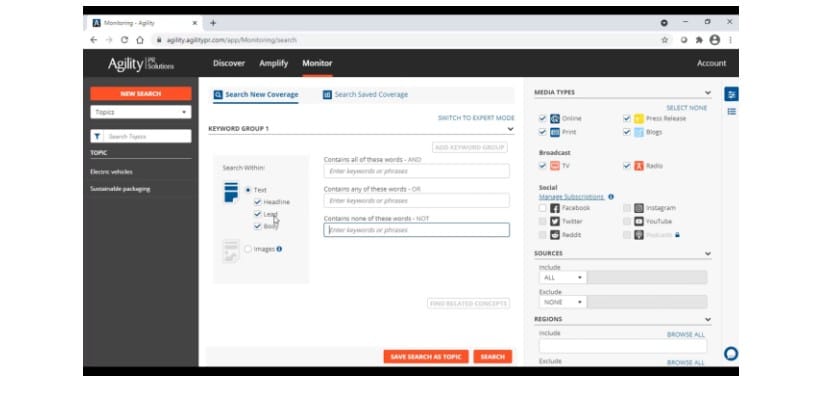
Select the sources from which you want to receive alerts.

It creates a summary of these conversations, and also lets you run a sentiment analysis to understand customers better.

Build Strategies to Respond and Initiate Conversations
If conversations about your brand are going to take place regardless, it’s only prudent to steer them in a positive direction.
Create reactive and proactive communication strategies to build a stronger brand presence.
Reactive strategies cover responses to
- feedback, positive and negative,
- questions, and
- complaints.
Proactive strategies revolve around
- generating feedback,
- creating buzz around a product or event,
- organizing contests and UGC drives, and
- sharing company achievements.
Shortlist media contacts from Agility’s database of media contacts to amplify your message.

Find the right audience for your message with Hunter’s lead database.

Apply ICP filters such as industry, location, company size, niche, etc.
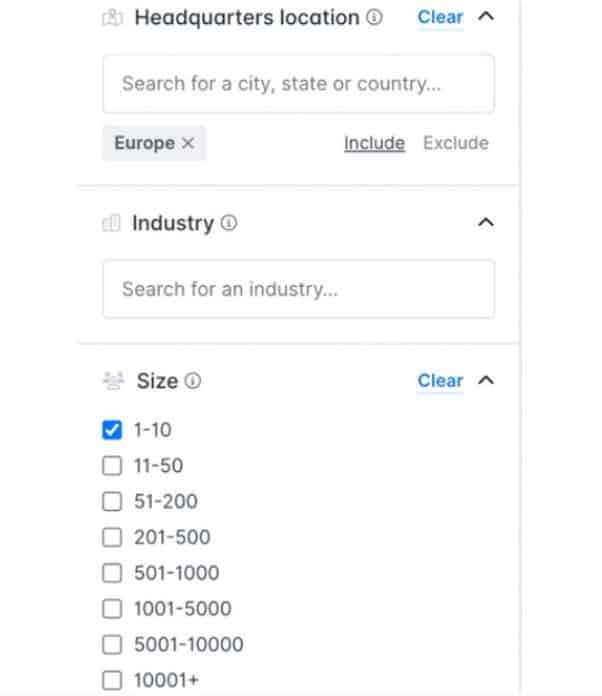

And identify companies and individuals that you can target to generate awareness, interest, trust, and revenue.
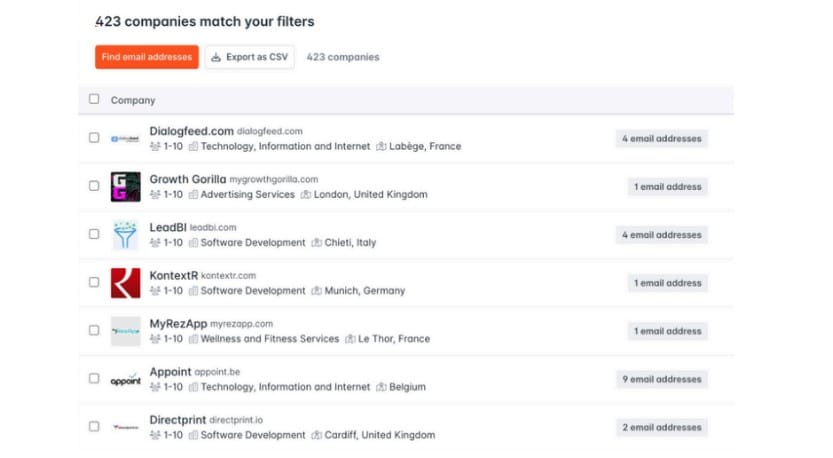
Create a Response Style Guide
Part of protecting your brand reputation is ensuring uniformity in how it is perceived.
Create a tone guide or handbook for all client-facing employees containing templatized responses to FAQs or concerns. These should be platform-appropriate. (You wouldn’t respond to emails the way you would to Instagram comments.)
Key phrases and terms to be used and avoided should be incorporated into these templates along with design elements.
You should also create an emergency protocol for placating irate customers and escalating their issues so that your team can tackle problems before they snowball into a crisis.
Share Your Game Plan
A brand’s external identity should align with its internal identity.
Don’t just train employees in standard-issue responses.
Your employees must understand how to represent your brand before audiences in a way that remains true to your core philosophy.
For example, if your brand’s priority and promise is quality, your employees will take product performance complaints very seriously. The remedies they offer will reflect the brand’s commitment to quality.
Even when marketing strategies and goals change, the brand’s underlying ideals will not.
Your team can handle textbook queries and complaints almost as if on autopilot. But where employees of less aligned brands might struggle when dealing with situations outside the handbook, employees trained in brand communication will know exactly how to respond.
Take Action
Respond to feedback from different channels to show your customers you’re listening to and care about their opinions.
Acknowledge and appreciate compliments, and pass on positive feedback to the team or employee responsible.
Use complaints to improve your product or service.
If you don’t have a customer or social media user’s email information, use Hunter’s Email Finder.

Enter their name and organization’s domain to find a verified email address.

Inform the complainant about steps taken to:
- Compensate them for the inconvenience
- Introduce structural reforms to avoid repeats
You can simply list key points and let the AI-powered writing assistant CoPilot write these emails for you.
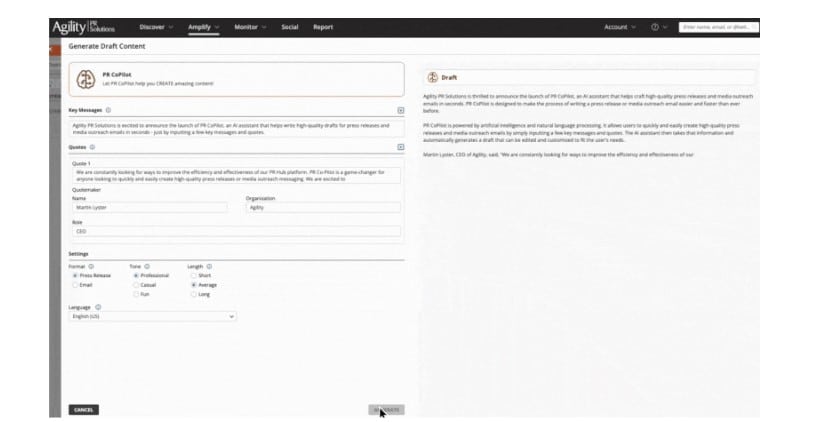
Personalize templates and track emails to see how many have been delivered, read, and replied to.

When you implement feedback, let the complainant know. Offer a discount coupon or exclusive offer to re-engage them. For wider issues, share the resolution on social media or through your email newsletter.
Measure Your Success
To track if your brand reputation-building efforts are paying off, these are the metrics you should be monitoring:
- Social media sentiment score
- Reach and engagement
- Net Promoter Score
- Share of Voice
- Media penetration
- Broadcast mentions
- KPIs like an increase in sales and market share
- Repeat purchases
- Decrease in complaints
- Increasing average customer lifetime value
A media intelligence tool like AgilityPR can collate and analyze this data to measure brand reputation on different channels and for different periods.
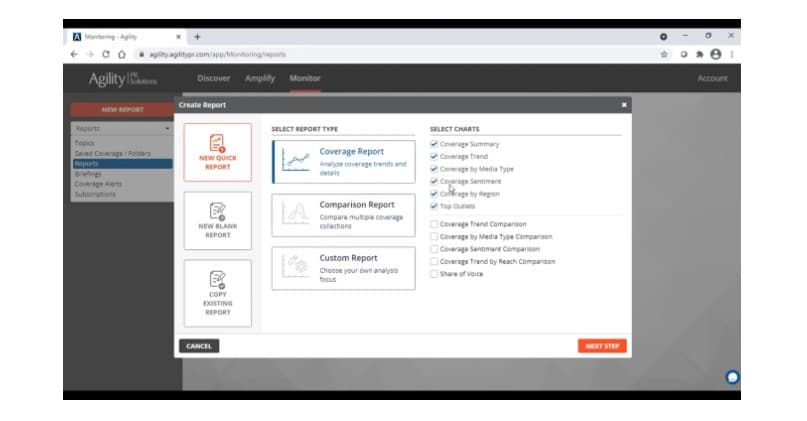
Compare the information with the previous quarters to determine if your brand reputation has improved.
Conclusion
Start building your brand reputation by actively monitoring social media conversations and feedback, implementing it, and engaging with audiences in a manner reflective of your brand values and
Identify areas for improvement and develop strategies to bridge the gap between your actual and desired reputation.








